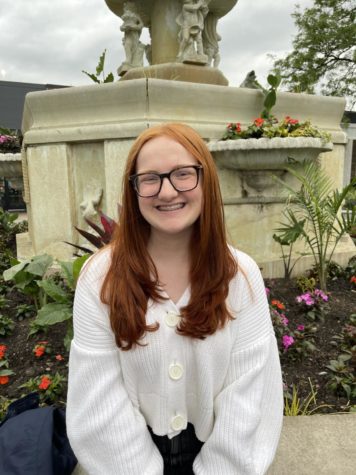Opinion | Why I didn’t opt into hybrid learning
April 26, 2021
On March 1, ETHS announced their plan to initiate a hybrid learning program, after students spent the last year learning virtually. The plan called for students to opt into the hybrid learning plan with a rotating block schedule that would have students attend one in-person session for a given course every other week.
Learning online has been a struggle for us all. Personally, as someone who enjoys the interactions and rigor of in-person learning, the shift to an online environment was a bit of a shock. This feeling among students was not uncommon, as solely online learning had been unprecedented to most of us. I wanted to return to in-person learning. I missed the interactions with my teachers, classmates and friends. I missed the normalcy of walking the ETHS halls and seeing my fellow students around.
But I made the decision not to go back in for hybrid learning.
This is for a variety of reasons. One of the most important reasons I feel the need to acknowledge is that I am at a higher risk for COVID-19, as are my parents. It was important for me not to put myself or anyone else in my home at an unnecessary risk because of hybrid learning. However, that was not the major factor in my decision, as both my parents and I have still interacted and engaged with others. Health was not the sole, or even major, factor in my decision to continue with online learning; that decision came with what I felt were the weaker aspects of the hybrid learning program.
The hybrid learning plan is unclear and ultimately quite confusing. When I initially read it over, the plan made little sense. This was a similar experience for many others. I had most of my teachers tell my classes that they did not know what this hybrid plan was or how it would work. The current plan has way too many variables for an effective option for most people to understand clearly. Even when taking time to think out what this option would mean for me, I was still confused and had too many long conversations before gaining somewhat of an understanding. And it’s not like we had much time to do so, with the hybrid selection form coming out March 2 and needing to be submitted by March 5, which is definitely not enough time to make such an important decision.
While the complexity of the plan itself does a good job of maintaining a safe environment both for students and faculty, the lack of clarity makes it difficult to come to a specific conclusion about how it will directly impact an individual student. This was part of the reason why I did not opt into hybrid learning, because neither me nor my parents fully understood what the plan actually was and we didn’t have enough time to figure it all out. A strong way to possibly curb that confusion could have been for the school to host an event for students and parents to ask questions about what was going to happen and how that would look for their students or inform students in ways outside of email and ETown Live. Simply reading on a screen in an email or on a fact page of the school’s website is not enough, even with the visual aids and repetitive descriptions on what the plan would look like.
The hybrid learning plan, which was implemented on April 14 after spring break, operates for about six weeks for students to be hybrid learning. Most students’ last day is on May 28, while seniors’ last day of school is May 13. While I understand there needed to be time for the number of COVID-19 cases to decline and ample planning time, having the switch to hybrid so close to the end of the year, with such little time to actually have school in the building, the process didn’t feel worthwhile for me. Going in for hybrid learning for only three weeks towards the end of the year as AP tests are ramping up and while teachers still need to teach online to those who did not opt into hybrid learning, the process as a whole felt unfilling for my own learning experience.
Being able to make the choice to learn at home rather than in school is a luxury. I have my own room, where I can study comfortably without distractions. I am in a position of privilege by making the decision to learn at home because I understand that is not the case for all. My decision for not opting into hybrid learning is a personal decision that I made in terms of my own health, comfort, and positionality on the ETHS hybrid learning plan. After taking the time to reflect and understand my own thinking, I understood that taking those steps back into ETHS were not worth it. The risks it posed for me and my loved ones, the confusion of the plan and the proximity to the end of the year all contributed to my decision of not returning. But my decision is not yours and the decision to switch to hybrid learning marks just another example of the unprecedented nature of the time we are living in.




















